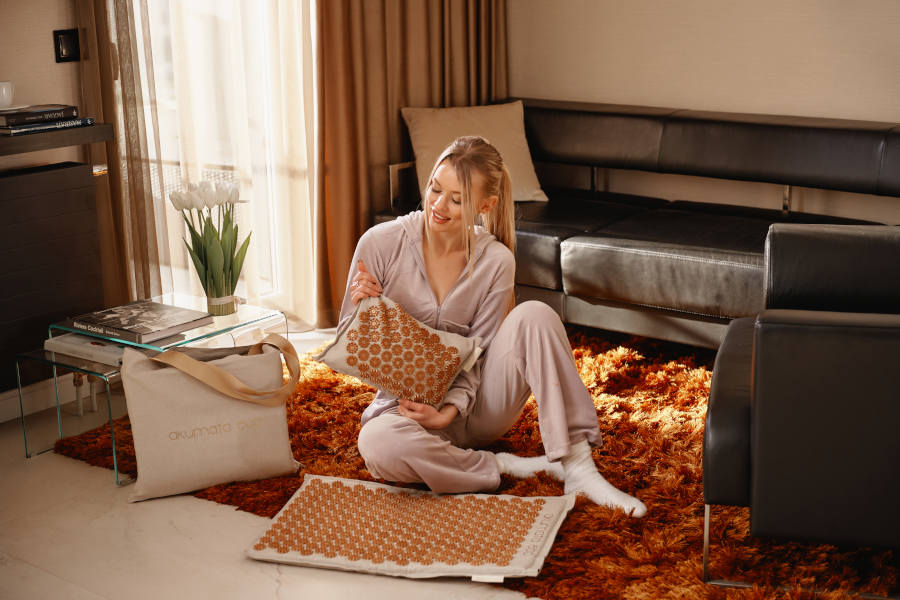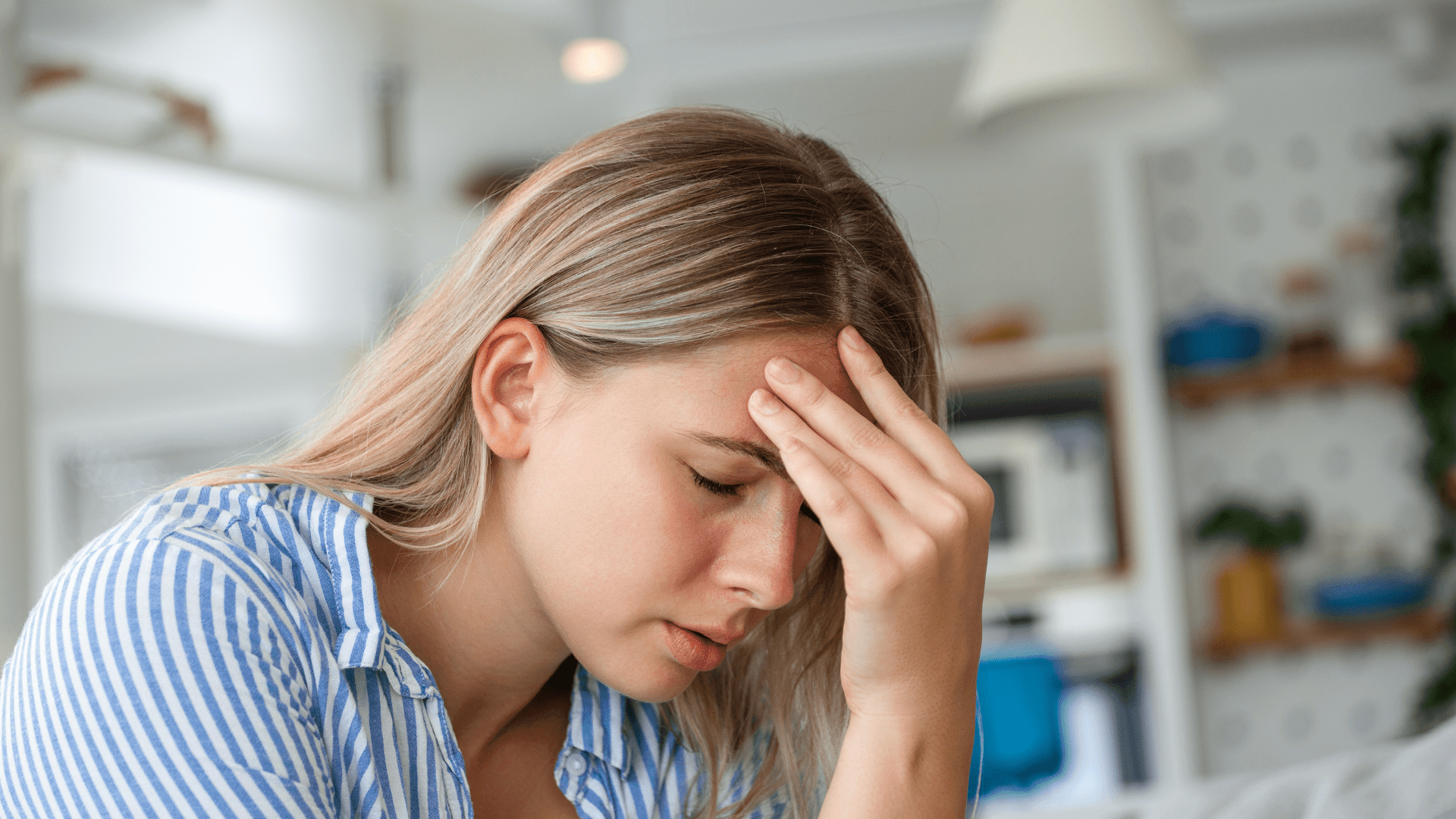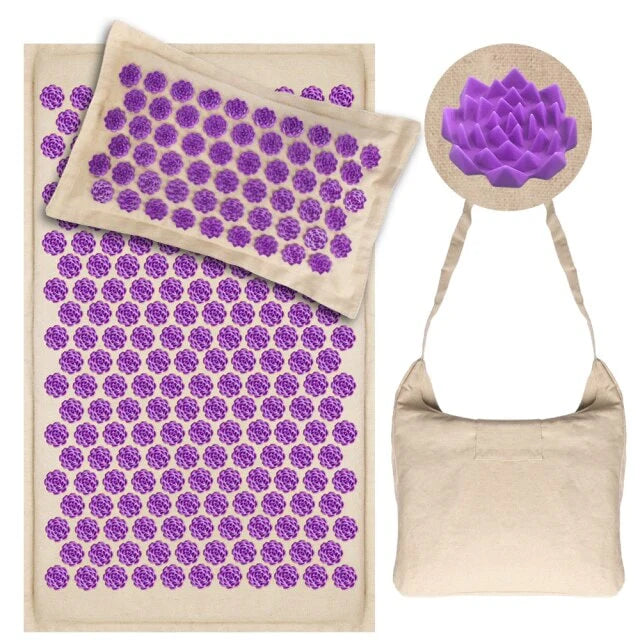Acupressure is a method of Asian medicine very similar to acupuncture. The same acupressure points are stimulated to bring you relief. A therapy that proves very useful for pregnant women.
When the due date has passed, expectant mothers often seek to induce labor. And that's where acupressure comes in to help.
So, if you'd like to know all about acupressure points and their benefits during childbirth, let our article be your guide.
What is acupressure?
Acupressure is a therapy derived from traditional Chinese medicine. It is very similar to acupuncture, but unlike acupuncture, no needles are used. Instead, the fingers exert pressure on the various acupuncture points.
These points, once stimulated, offer different sensations of relief depending on which ones are activated.
Originally, acupressure was used to reduce muscular tension and bring about a feeling of relaxation. The therapy is also often used to relieve pain, headaches, nausea, etc.
As you may have gathered, acupressure is applied by the fingers, but not just anywhere. Pressure is exerted on pivot points located along the meridians, the same as in acupuncture.
Since acupressure is not as precise and delicate as acupuncture, it's easy to apply this technique. With the right instructions, you can easily do it yourself, or ask someone to help you.
There are many acupressure points with different names, but among the best-known we can mention three:
- Large intestine point 4 (GI4), located between the thumb and forefinger, at the level of the palm.
- Spleen point 6 (SP6) at the bottom of the calf
- Bladder point 60 (BL60) behind the ankle
The most delicate acupressure points should only be manipulated by experienced practitioners. However, it is common practice to stimulate acupressure points during or before childbirth, either by self-massage or by asking for help.
Acupressure and childbirth
For expectant mothers, childbirth can sometimes be painful, but acupressure is a solution that can help relieve pain during childbirth. It's also a natural way to induce labor and avoid medical intervention.
There are three key moments during childbirth when acupressure can help:
- When labor has not yet begun, even though the due date has passed.
- When you need help managing contractions during labor.
- When you're waiting for labor to begin after your water has broken.
- If you use acupressure during labor, make sure the pressure is applied directly to the pivot point, rather than massaging a large area.
Be sure to start acupressure as soon as you feel the first signs of childbirth. However, if you feel any discomfort during acupressure, stop - it will be more disturbing than beneficial for you.
The benefits of acupressure for your pregnancy
Whether during childbirth, before or during labor, or with the aim of inducing labor, stimulating acupressure points has a number of benefits:
- Relief of nausea.
- Stimulation of placental delivery.
- Reducing back pain.
- Relief of overall childbirth pain.
- Relieve pressure on the cervix.
- Stimulate contractions.
- Help reduce the duration of labor.
- Reduce the need for medical interventions.
- Prepare the body for childbirth by stimulating blood circulation in the pelvis.
- Facilitate your baby's descent
- Combat anxiety during childbirth
There are many other benefits, but these are just some of the main ones. Every mother-to-be will feel the benefits differently, some more than others, because every body and every mother-to-be is different.
Acupressure during childbirth does not present any particular risks, but you do need to be careful when using it. Before trying it on your own, or with another person, talk to your doctor. You can also talk to your midwife if you have any questions or concerns about acupressure.
Have you just been given the green light for acupressure by your doctor? Then it's perfect, because we've put together a list of a few points you can stimulate yourself.
7 Acupressure points to soothe your labor
We've put together a short list of 7 acupressure points that you can stimulate for self-massage, and which are often used during pregnancy and labor. To make things easier for you, we've arranged them from the top to the bottom of the body.
1) Gallbladder point 21 (GB21)
This acupressure point is located between your neck and shoulder, in the middle of the shoulder muscle, just above the collarbone.
Once you've managed to find it, all you have to do is stimulate it by pinching it between your index finger and thumb, exerting continuous downward pressure.
Stimulation of this point will help relieve stiffness in the neck and shoulders, but is especially useful during labor. It will make contractions more effective and less painful.
2) Large intestine point 4 (LI4)
This is one of the most effective points to help with labor, located on the hand between the thumb and index finger. It is located precisely below the index finger joint.
Using the thumb of your other hand, pinch the web between the thumb and index finger. Apply continuous pressure to this area, or massage the acupressure point in circles.
This point is very useful for stimulating contractions or softening them. It is also a point that is activated to facilitate your baby's descent.
3) Pericardium 8 point (PC8)
The PC8 point is an acupressure point located right in the middle of the palm of your hand. To find it, clench your fist and position the thumb of your other hand where your middle finger is.
Once you've located it, use your thumb to exert constant pressure on it. As with the LI4 point, you can also massage it for a few seconds.
The PC8 point is often used to help induce labor.
4) Bladder point 32 (BL32)
This acupressure point is located in the lower back, just below the kidney and lumbar fossae. These are precisely two small hollows located just above the buttocks.
To find the BL32 point, simply move down the spine until you feel two small hollows on either side. Once you feel them, press down with both thumbs to apply constant pressure. You can also rub the acupressure point in a circular motion.
This point is stimulated to relieve pain during childbirth, to help the baby descend, and to trigger regular contractions.
5) Spleen point 6 (SP6)
The SP6 point is an acupressure point located at the bottom of the leg, just above the ankle, at the back of the calf.
To find it, place four fingers over the inner bone of your ankle, then slide them behind. At calf level, you should feel a soft area - this is the acupressure point.
To stimulate it, simply apply firm, constant pressure with your index finger. You can also rub the area in small circles for several minutes, or until you feel a contraction.
This pivot point helps to stretch the cervix, strengthen contractions that would otherwise be too weak during labor, reduce pain and induce labor if the due date has passed.
6) Bladder point 60 (BL60)
The BL60 point is located just below the SP6 point, and is an acupressure point between the ankle bone and the Achilles tendon.
Once you've found it, press down on the skin with your thumb to apply constant pressure. As with the other points, you can also massage in small circles.
It will help you if your baby hasn't descended yet, increasing blood circulation and relieving the pain of contractions. This acupressure point is also very useful for inducing labor.
7) Bladder Point 67 (BL67)
Probably the easiest point to find, it's located on your little toe, on the outer edge, at the beginning of your nail.
To stimulate it, simply pinch your little toe and apply pressure to the tip, just below the nail.
The BL67 acupressure point is a great way to help you get your baby out the door smoothly and easily.








